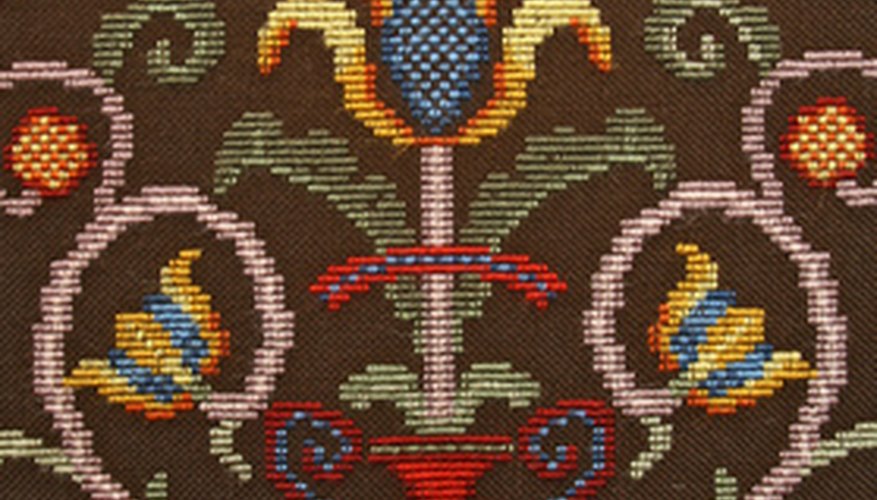A textile, such as a rug or tapestry, can be mounted on the wall in a frame protecting it from environmental damage or for display purposes. Framing a rug or tapestry takes more effort and care than framing a photograph or poster does. Although the process of hanging a tapestry is basically the same as that of hanging a picture or poster, additional steps must be taken to ensure that it is held securely in place while hanging on the wall. Textiles are heavier than paper, and therefore require a sturdier frame.
- A textile, such as a rug or tapestry, can be mounted on the wall in a frame protecting it from environmental damage or for display purposes.
Lay the rug or tapestry flat on the floor and smooth out its edges. Measure its sides carefully using a yard stick or measuring tape and note down the measurements. Exact measurements are important when obtaining the frame.
Choose a frame that you like for the rug or tapestry, such as one that complements the colours of the rug or tapestry. Pick a heavier frame, such as a gilded, neoclassical frame. Thin, light plastic frames only work for pictures or items that are extremely lightweight.
- Choose a frame that you like for the rug or tapestry, such as one that complements the colours of the rug or tapestry.
Use casings or Velcro on the back of the tapestry or rug to hold it even tighter in place when it's framed. When using casings, hand sew casings made of heavy cotton, linen or cotton twill rug across the top of the back of the rug or tapestry. Then, insert a metal rod which is shorter than the width of the rug or tapestry into the casing. The casing should not be visible on the front of the rug or tapestry, but should be perfectly straight and bulge from the backside. If it is sewn unevenly, the rug or tapestry will hang unevenly.
When using Velcro, hand sew a strip of it to the top back of the rug or tapestry with the soft fuzzy side on the textile. Use fabric glue for extra hold. The matching, stiff Velcro part should be stapled to the inside of the frame. The Velcro should be attached straight and match perfectly. Use two strips if one is not enough.
Place the rug or tapestry onto the inside back of the frame. Smooth out its edges so that the textile lays evenly and straight. Depending on the frame you got, you may need to assemble it by attaching the glass front and the sides of the frame to its back. Close the frame if necessary. The rug or tapestry will now be secure in the frame and can be mounted on a wall.
- When using Velcro, hand sew a strip of it to the top back of the rug or tapestry with the soft fuzzy side on the textile.
- Depending on the frame you got, you may need to assemble it by attaching the glass front and the sides of the frame to its back.
TIP
Instead of casings or Velcro, you may use matting, which is a border for your textile. Matting makes it easier to insert the tapestry into the frame. The matting usually is placed on all of the edges on the back of the rug or tapestry.
WARNING
Don't use adhesives to mount textiles if you plan on undoing it later on if desired. Pick metal rods which are painted, varnished or shellacked to prevent rusting, which can stain your rug or textile over time.
